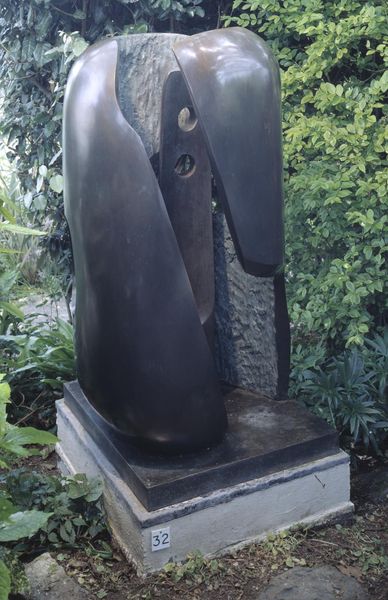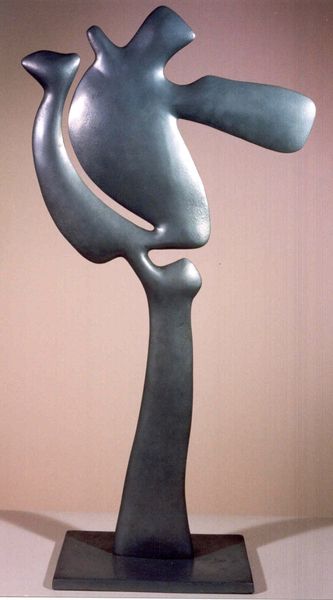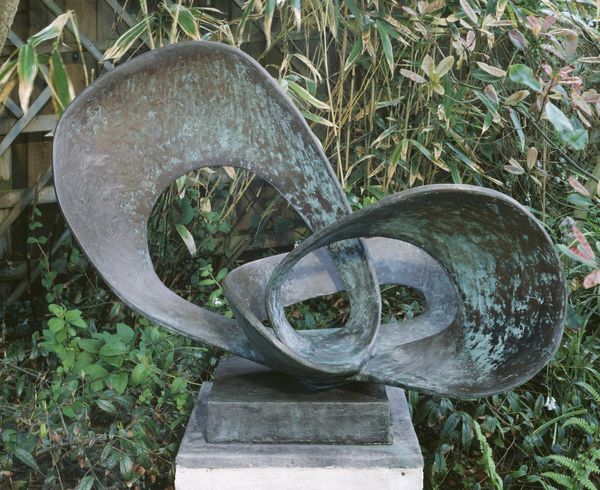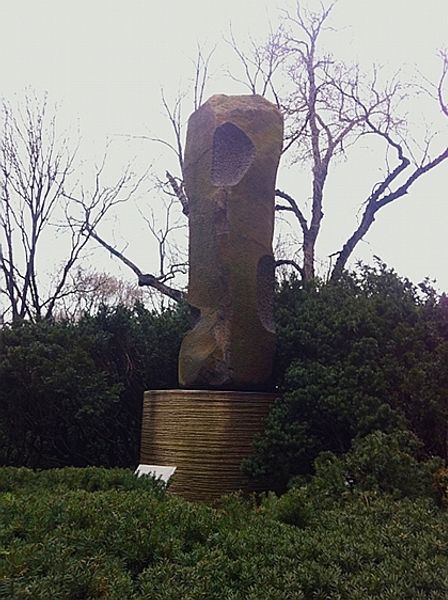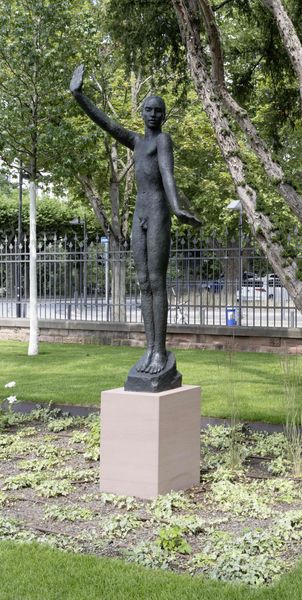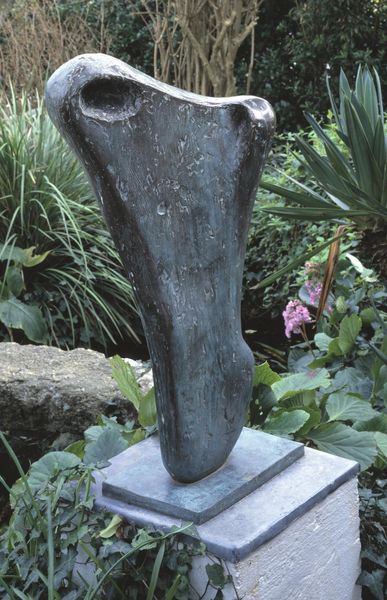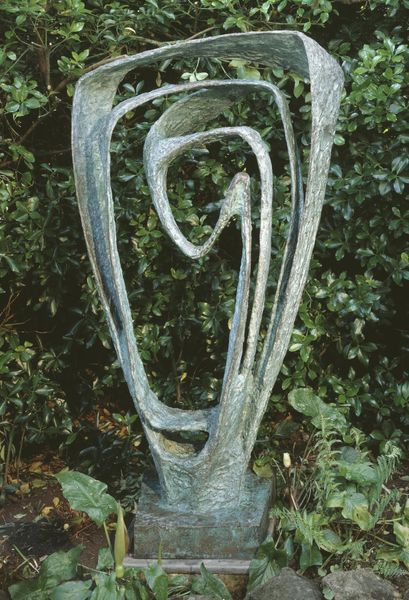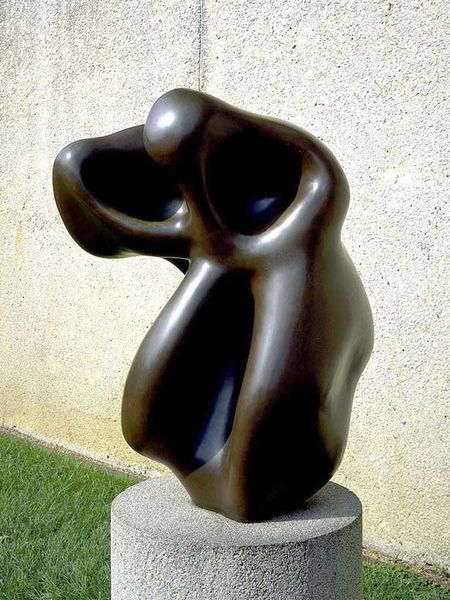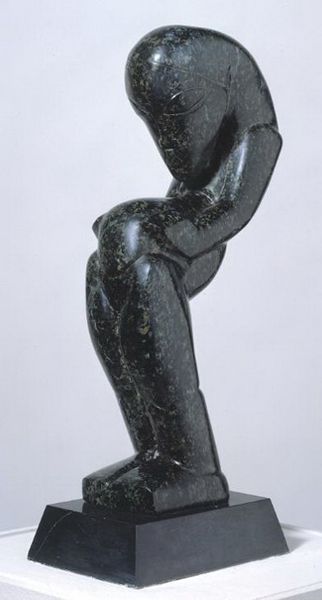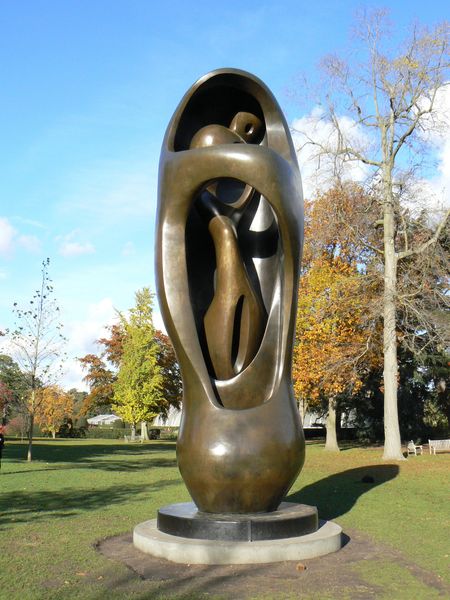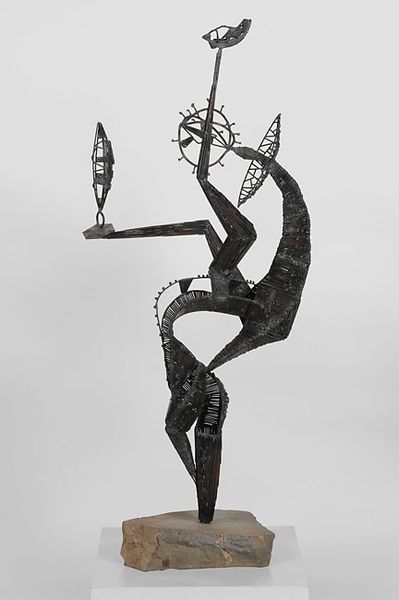
bronze, sculpture
#
statue
#
bronze
#
figuration
#
sculpture
#
abstraction
#
modernism
Copyright: Henri Laurens,Fair Use
Editor: Henri Laurens' "L'Amphion", crafted in 1952, really stands out. It’s a bronze sculpture, quite imposing actually. The way the figure almost merges with the instrument gives it this monumental yet lyrical feel. What strikes you about this piece? Curator: Oh, it sings, doesn't it? For me, it's Laurens’ clever abstraction; he's not just showing us Amphion, the musician, but embodying the *idea* of music itself. See how the figure and lyre are practically one? The bronze almost breathes, doesn't it? It’s as if Laurens caught a melody in solid form, this profound feeling! Does the smoothness invite your hand to touch? Editor: Absolutely, the curves are really inviting. It makes you wonder what inspired Laurens to blend the figure so completely with the lyre? Curator: Good question. Laurens was fascinated by the myth of Amphion, who, with his music, could move stones and build cities. This piece embodies that transformative power. Laurens uses form, smooth curves, and those vertical string-like lines to evoke harmony, architectural grandeur and, you know, maybe even the dawn of civilisation, one note at a time. Almost as if he wanted to ask the same: could art really build cities, one dream at a time? Editor: That’s amazing, I didn't realise how many layers there were. Curator: That's sculpture, that's modernism – like looking into a multifaceted mirror that throws so many different answers to its question, with no clear answer. It can be fun. See, the story and the metal just vibrate here, don't they? So what’s changed about the way you view Laurens and *L’Amphion*? Editor: Well, now I appreciate it's not just a statue. It’s music given physical form, an ancient myth re-imagined, which makes it feel somehow timeless, wouldn’t you agree? Curator: Indeed. A symphony in bronze.
Comments
No comments
Be the first to comment and join the conversation on the ultimate creative platform.
